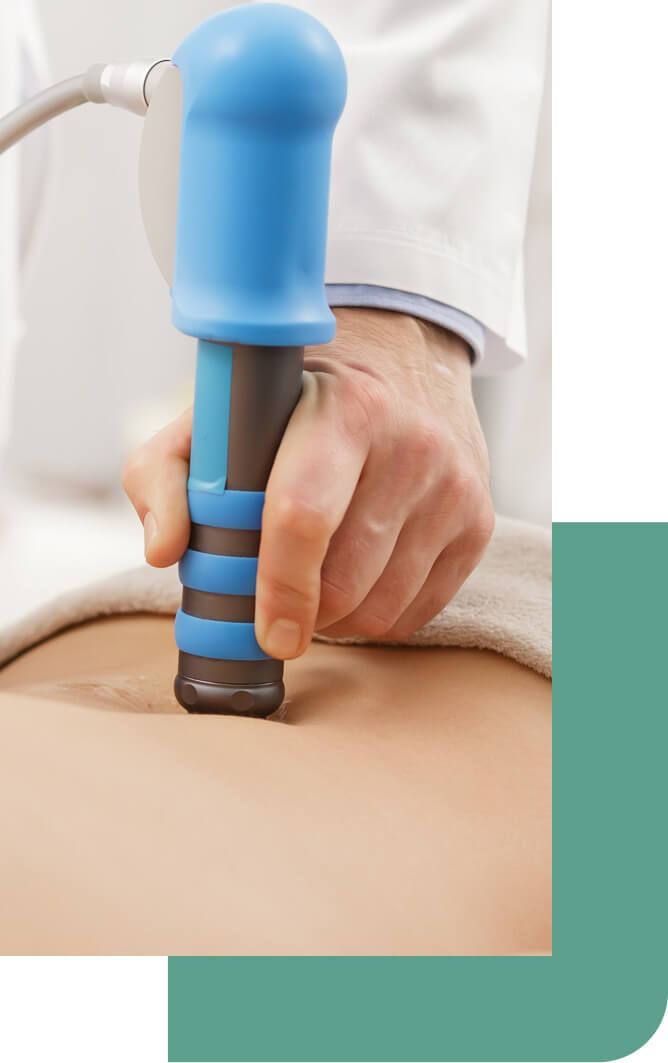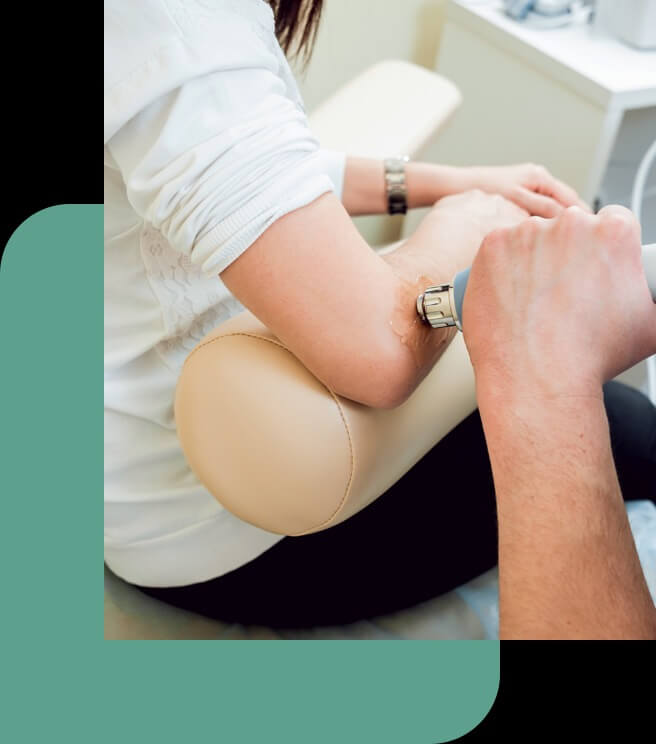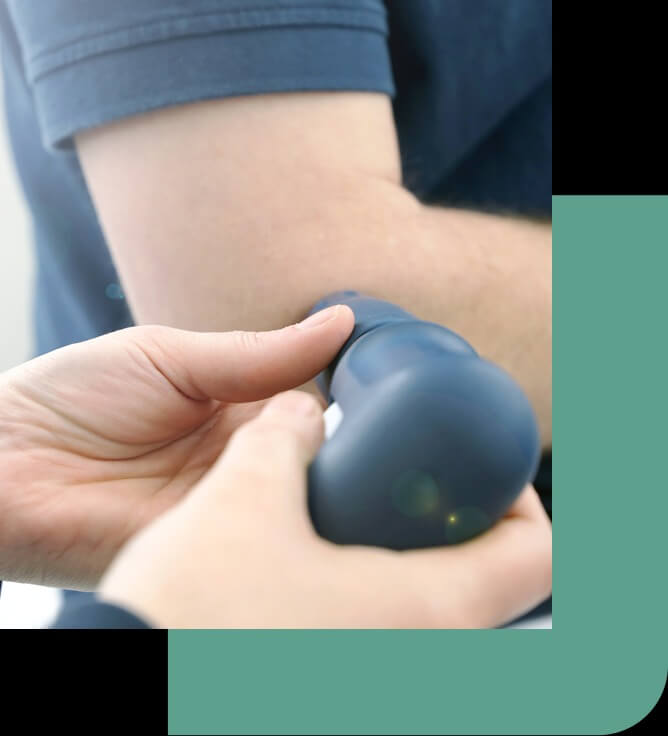
Shockwave therapy, also known as extracorporeal shockwave therapy (ESWT), is a non-invasive treatment that involves the delivery of high-energy acoustic waves to injured parts of the body to facilitate healing. Shockwave therapy has wide applications, used for everything from treating ED to breaking up kidney stones to treating musculoskeletal injuries.
As a non-invasive therapy that brings pain relief to patients and gives them back their mobility, shockwave therapy is quickly emerging as an alternative in the field of chiropractic medicine.
At Governor’s Park, we use the state-of-the-art CuraMedix Ultra 200 to treat musculoskeletal injuries, such as plantar fasciitis, tendonitis, tennis elbow, and rotator cuff injuries. If you are interested in healing faster than with chiropractic adjustments alone, shockwave therapy might be for you, as it is intended for patients with acute or chronic pain who are resistant to other treatments. If you’re interested, book a consultation at our Denver location.
How Does Shockwave
Therapy Work?
The body responds to these microtraumas as it does with any new injury: increased local blood flow, decreased local pain, and stimulation of cell regeneration and repair. In other words, the shockwaves act as a catalyst to promote the body’s self-healing capabilities.



How Does Shockwave Therapy
Help Treat Chiropractic Issues?
The use of shockwave therapy in chiropractic care is still relatively new, but its non-invasive nature and potential for promoting healing make it a promising tool. Though we understand the importance of shockwave therapy for erectile dysfunction or for breaking up kidney stones, we purely focus on the musculoskeletal benefits of ESWT.
How Shockwave Therapy Helps With Musculoskeletal Injuries
- Back and Neck Pain: Shockwave therapy for neck pain is a common treatment, allowing patients suffering from chronic back or neck pain to find relief.
- Shoulder Tendinitis: Shockwave therapy can alleviate pain and promote healing in patients with shoulder tendinitis by stimulating blood circulation and tissue regeneration in the affected tendons.
- Plantar Fasciitis: Shockwave therapy for plantar fasciitis reduces inflammation and pain in the plantar fascia (the tissue along the bottom of the foot) by promoting blood flow and accelerating tissue repair.
- Osteoarthritis: This therapy can help reduce pain and improve joint function in osteoarthritis by stimulating the regeneration of cartilage and decreasing inflammation.
- Knees: For knee conditions like patellar tendinitis or osteoarthritis, shockwave therapy reduces pain, enhances blood flow, and stimulates the repair of tendons and other tissues.
- Hips: It can relieve pain associated with hip bursitis or tendinitis by stimulating healing and reducing inflammation in the hip joint.
- Spine: Shockwave therapy helps manage chronic back pain by enhancing circulation, reducing muscle tension, and promoting the healing of soft tissues around the spine.
- Disc Herniations: By promoting blood flow and reducing inflammation, shockwave therapy can help manage pain caused by herniated discs and stimulate the repair of surrounding tissues.

What Does Shockwave
Therapy Feel Like?
The sensation experienced during shockwave therapy can vary from person to person and can depend on the area being treated. At the lowest setting, it can feel like a mild tapping sensation against the skin. However, at higher intensities, it can be slightly uncomfortable or even painful — some have reported it feeling like being snapped with a rubber band. However, the discomfort that patients may feel is within tolerable parameters — there is no need for anesthesia.
We gradually ramp up the therapy from the lowest intensity, giving you time to acclimate. While pain is typically manageable, we can lower the intensity at any time. Afterward, the treated area may feel sore or numb for a few hours.



How Long Do Shockwave
Therapy Treatments Last?
A single shockwave therapy session can last anywhere from 10 to 20 minutes, depending on the area being treated and the severity of the condition. The recommended course of treatment is four to six shockwave therapy sessions per week until the pain subsides.
Some patients may require more sessions if their condition is more severe. While patients may feel results within the first two treatments, it may be four weeks before patients begin to feel pain relief from shockwave therapy. Ultimately, the best course of action will be determined in consultation.
